Tom's Hardware Verdict
The Facecam Neo won't blow you away with image quality, but it works with more than just a Windows PC or Macbook, and it's pretty darn cheap.
Pros
- +
Cheap
- +
Physical privacy shutter
- +
Does well in less-than-ideal lighting situations
Cons
- -
Regular picture tends to be blown out
- -
Doesn't perform well in over-exposed scenarios
- -
Feels a little cheap
Why you can trust Tom's Hardware
It might seem like all of today's best webcams are packed with crazy features — 4K resolution, AI-powered tracking and focusing, giant sensors, and next-level color and level balancing. But not everyone is looking for a webcam that they can shoot an Academy Award-winning motion picture with — some people just want to look… good enough.
Elgato's Facecam Neo is designed for those people: It's a simple, budget-friendly webcam that records video at 1080p / 60 fps, and has a 1/2.9" CMOS sensor, an autofocus lens, and a physical privacy shutter. It's part of Elgato's Neo lineup, which is all about being easy — easy to use, easy on your wallet, and easy on the environment (it all comes in recycled packaging). The Facecam Neo has a fixed USB-C cable that can plug into your Windows PC, MacBook, or iPad, which already makes it more versatile than most webcams. It's simple, straightforward, and easy to use — and Elgato permanently slashed the retail price from $99.99 to $59.99, which makes it one of the best budget-friendly webcam options we've seen.
Design of the Facecam Neo
The Facecam Neo is a budget-friendly webcam that records in 1080p / 60 fps. It's a pretty standard-looking webcam, housed in a lightweight plastic chassis that measures 3.5 inches (88mm) wide by 1.6 inches (40mm) tall and is 1.3 inches (32mm) deep. The front of the webcam features the lens, which has a black ring around it denoting the specs, as well as a large white LED on the left side that lights up to indicate whether the webcam is currently streaming.
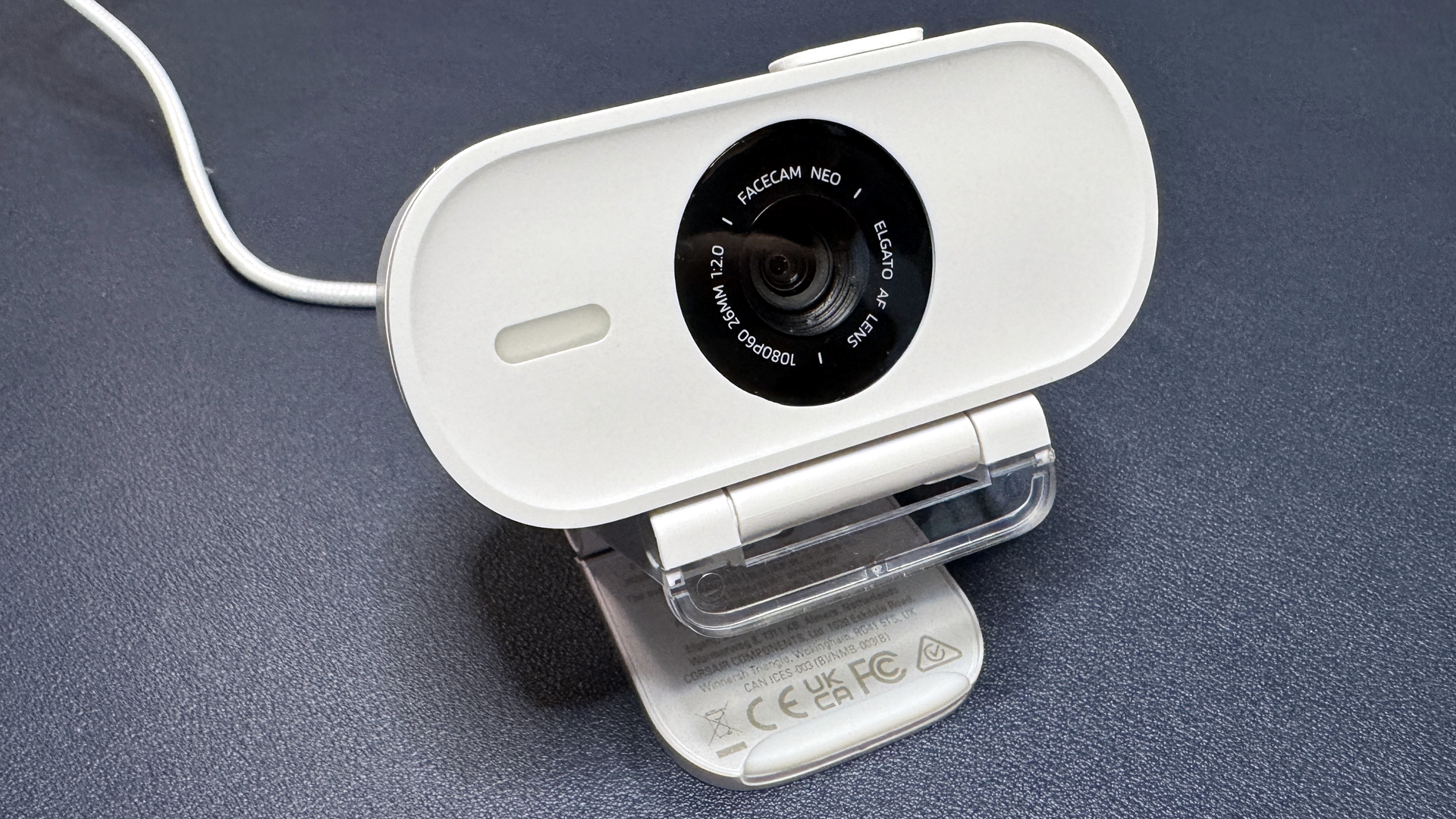
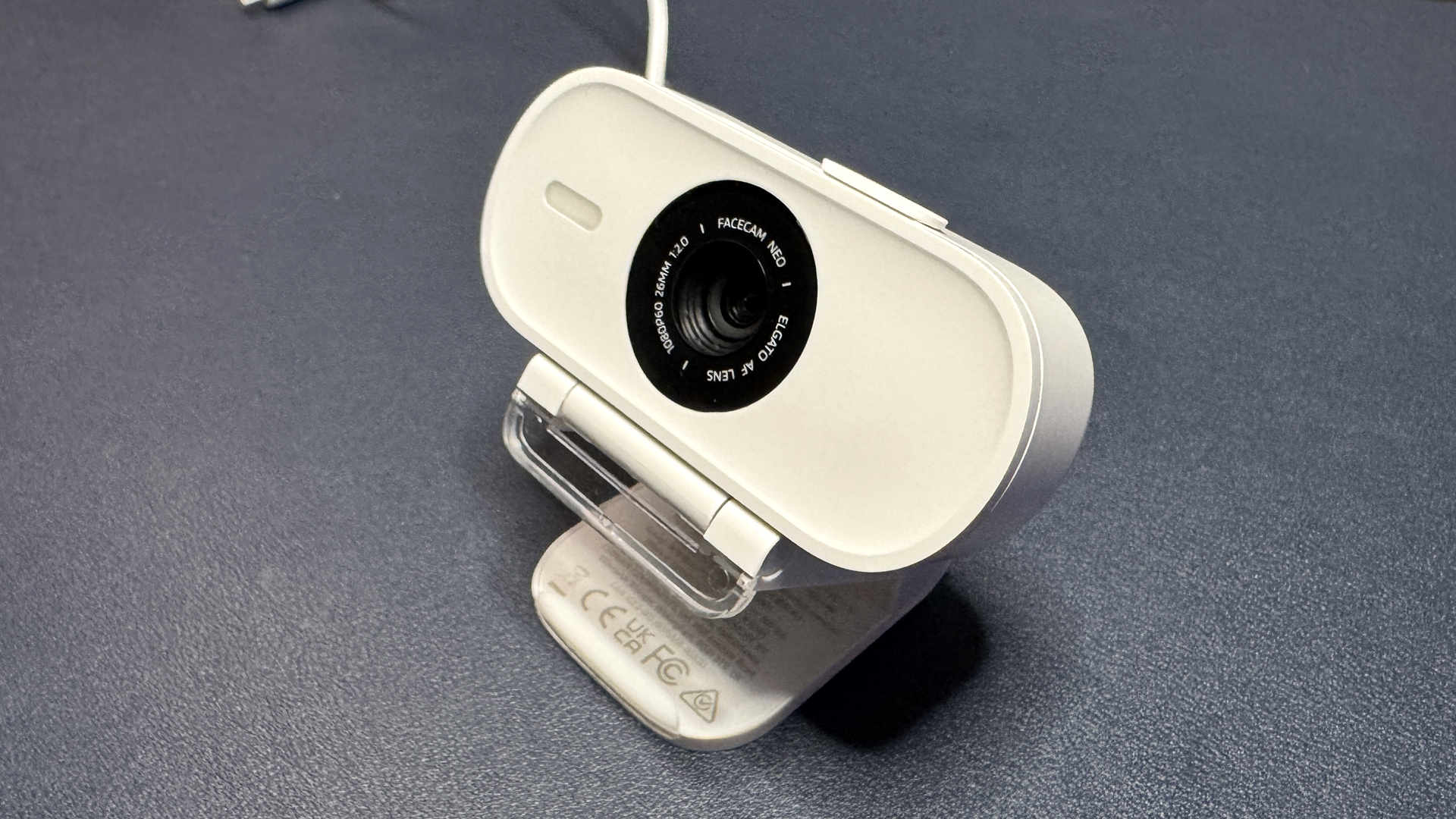

On top of the webcam, there's a small oval-shaped slider that controls a physical privacy shutter. It's not very fancy — it slides into place and has Elgato's circular "play" symbol logo debossed into it. The slider works well enough — it's smooth but has a little resistance, so I did find myself moving the webcam on my monitor when I went to open or close the shutter. This isn't a big deal, but it can be frustrating if you've spent time perfecting your webcam setup.
That said, the webcam is extremely lightweight — it weighs just 2.82 ounces (80g), not including the cable and stand, or approximately 3.1 ounces (88g) if you include the cable. The cable, which feels sturdy and is braided, is hardwired to the back of the webcam and is fairly stiff — in other words, this webcam is pretty easy to accidentally knock out of alignment even if you're not operating the shutter.
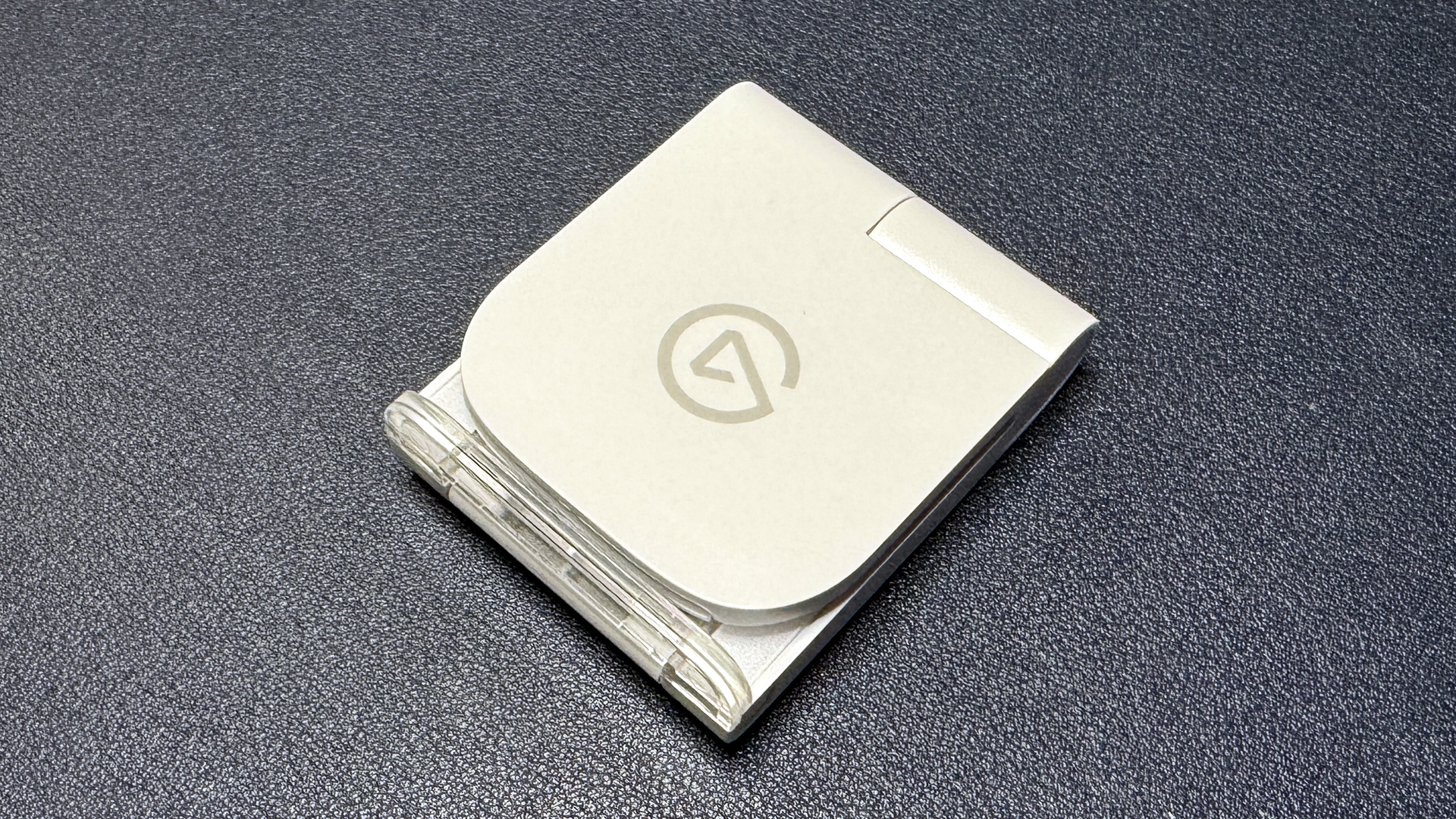

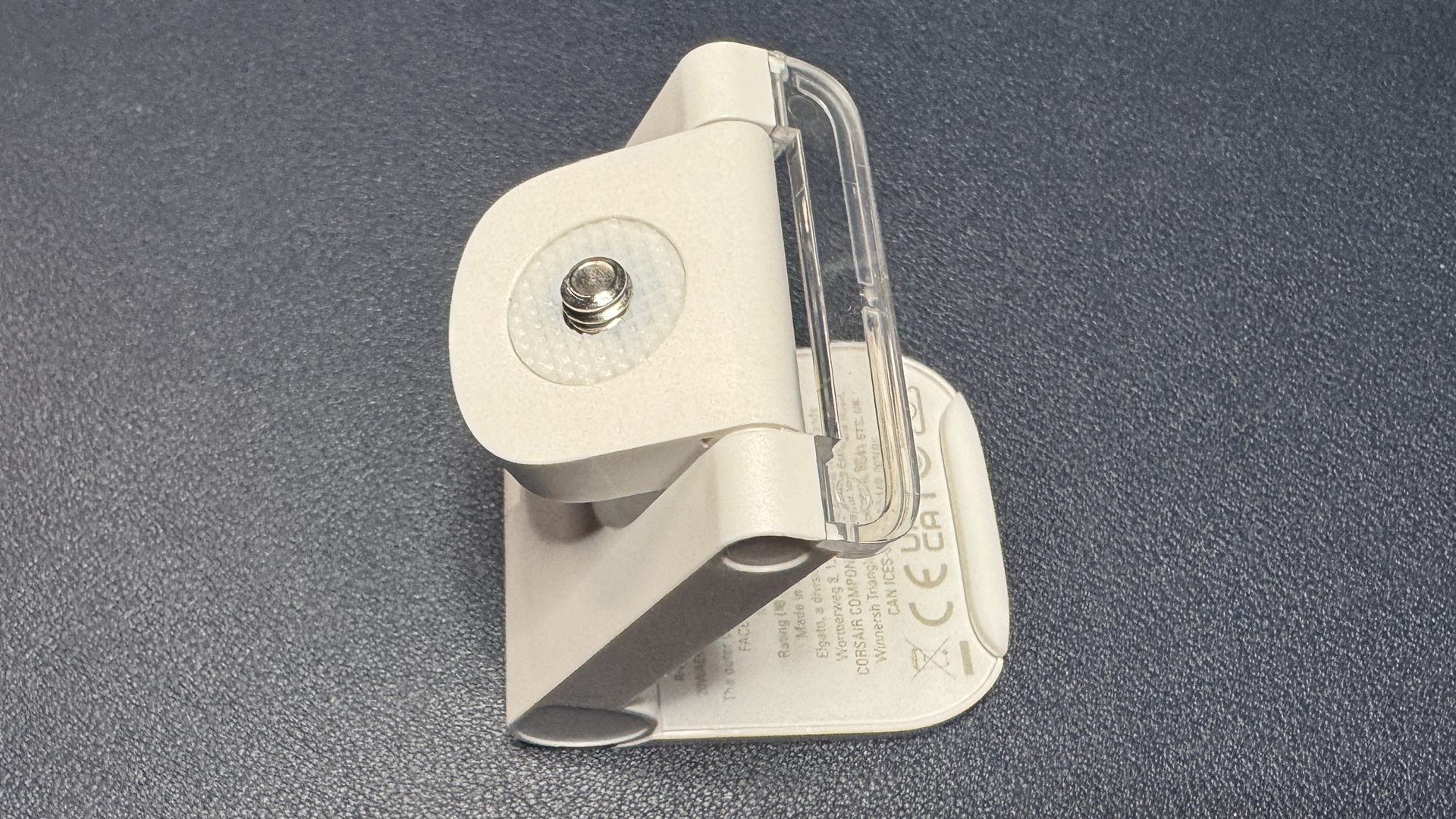
The Facecam Neo comes with a standard clamp-style monitor mount, which attaches to the bottom of the webcam via a standard quarter-inch threaded attachment point. The mount is designed to sit on top of your monitor and "clamp" itself against the back. It's a pretty basic monitor mount, but it does have a transparent front piece (so as not to interfere with the picture on monitors with thin or nonexistent bezels), and it allows for tilting (forward and back) and is detachable — more than I expected to see with a budget webcam.
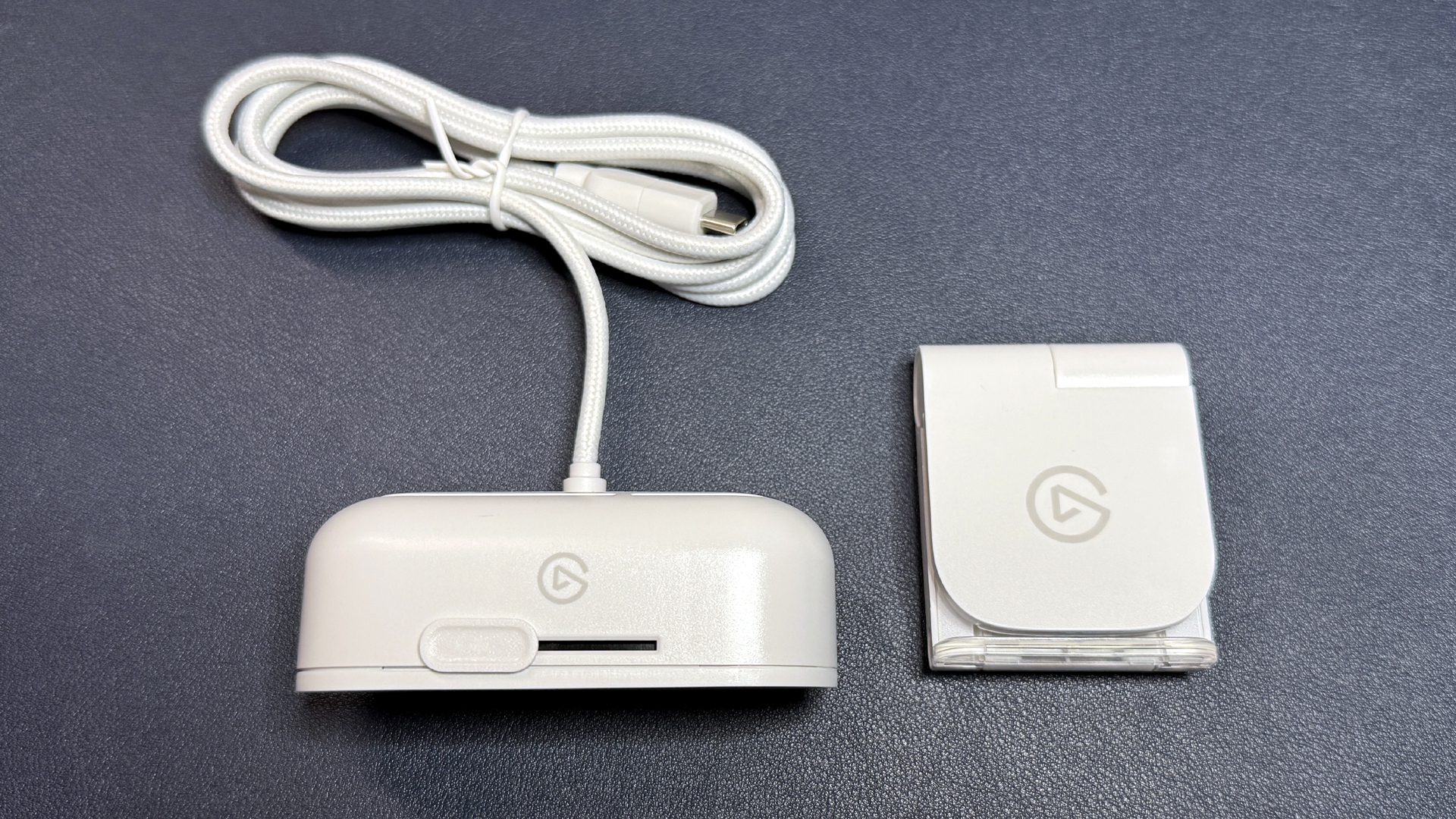
Like the other products in the Elgato Neo lineup, the Facecam Neo is designed to be plug-n-play and it comes with just two items in the box: the webcam itself, which has a non-detachable 4.5-foot braided USB-C cable, and the detachable monitor mount.
Get Tom's Hardware's best news and in-depth reviews, straight to your inbox.
Specs
Resolution FPS | 60 fps |
Diagonal Field of View | 77 |
Zoom | Fixed |
Autofocus | Yes |
HDR | Yes |
Microphone | No |
Connection | USB-C |
Mount | Clamp, detachable |
Dimensions | 3.5 x 1.6 x 1.3 inches / 88 x 40 x 32 mm |
Weight | 2.82oz. / 80g |
Software | Elgato Camera Hub |
Special Features | None |
MSRP / Price at Time of Review | $99.99 (launch MSRP) / $59.99 (current MSRP) |
Release Date | Row 13 - Cell 1 |
Well-lit Performance of the Facecam Neo




Our fully-lit lighting scenario consists of lighting all around the subject — in front, behind, and overhead. It's similar to a very well-lit office with a window — there's quite a bit of light in front of me, coming from four monitors, a ring light, and a fill light. Almost every webcam performs well in this scenario, and the Facecam Neo was no different. It performed pretty well, picking up a lot of crisp detail closer to the camera (you can practically count the strands of my hair) and balancing color fairly well. It did struggle with light levels (many webcams do in this scenario, which is very bright), and some parts of the image, such as the keyboards on the desk behind me, are blown out.
The Facecam Neo does have HDR, which you can turn on using Elgato Camera Hub. That’s Elgato's free webcam companion software. It’s not required for this webcam, but does give you access to some useful settings, such as HDR, auto/fixed focus, and digital zoom.

With HDR turned on, the Facecam Neo did a better job of adjusting light levels, but it wasn't perfect. As you can see, HDR did a better job of lighting my face — though I'd argue it needs slightly more contrast. Also, the keyboards behind me are still a little blown out. But turning on HDR did improve the light and color balance, even before I started manually tweaking settings. Turning on HDR does drop the Neo's frame rate to 1080p / 30fps, but that probably won't be too much of an issue for the Neo's target audience. Nobody is really considering this webcam for semi-professional Twitch streaming, let alone fast-paced action shots.
Low-Light Performance of the Facecam Neo




The Facecam Neo did surprisingly well in our low-light scenario, which is essentially complete darkness — the only light source in this picture is one 27-inch monitor, at 70% brightness, with a dark wallpaper and a website with a lot of white space (the regular Google homepage) open on half the screen. While the image still looked very grainy — there's a ton of noise and artifacting in the darker parts of the picture — I was impressed with how otherwise balanced the lighting and color representation looked. It's obvious from this image that I'm not in the best lighting scenario, but I don't think anyone would guess I'm practically sitting in the dark.
Overexposed Performance of the Facecam Neo




Our overexposed lighting scenario consists of one 27-inch monitor (at 70% brightness, with a dark wallpaper and half the screen open to the Google homepage) in front of the subject, and bright lighting over and behind the subject. This is generally the worst lighting setup for any webcam, but it's also one of the most common lighting setups (albeit, not necessarily quite as extreme). After all, most people work and game in well-lit rooms, but do not set up lighting behind their screen (unless they have a reason to, e.g., streaming).
The Facecam Neo didn't perform nearly as well in the overexposed scenario as it did in our other scenarios. It struggled a lot with lighting the subject — and it still ended up overexposing light-colored objects behind me. The webcam did a slightly better job with just a little more light — I maximized the Google homepage on my 27-inch screen, and the sensor adjusted the light balance instantly. It managed to get a decent amount of light on my face, but the picture quality is still pretty shaky.

Features and Software of the Facecam Neo
The Facecam Neo, like the rest of Elgato's Neo lineup, is designed to be as plug-and-play as possible. (But let's be serious: most webcams are fairly plug-and-play — while all come with software for tweaking settings, none require said software for the camera to work.) The Neo's out-of-the-box performance is good enough that you don't need to download any software, but Elgato's Camera Hub is fairly robust for a webcam app.
Camera Hub lets you toggle off automatic focus, exposure, and white balance, giving you fairly detailed control over how the webcam handles light. You can switch between standard and high dynamic range (HDR) in the exposure menu, and you can also adjust the webcam's post-processing (noise reduction and anti-flicker). The software has a handy "Frame" feature, which lets you zoom and crop the picture (you can save four presets and click to switch between them for different angles/focuses). It also has a handful of built-in effects, including filters and green screen-style backgrounds/background blur.
Camera Hub is only available for Windows / Mac OS — the webcam works on other platforms, but you'll need to change any settings on a PC or Macbook. The settings do save directly to the device, though — you don't need to have the software installed or running for settings like manual white balancing or HDR to work.
The Facecam Neo does not have a built-in microphone, which is not too surprising — webcam mics rarely sound passable, let alone good, so they're mostly just a waste. The Facecam Neo does seem to be designed for portability — it's lightweight and USB-C compatible, so you can plug it into a laptop, Macbook, or iPad — and most portable devices have built-in mics anyway (not that these are great, but they're no worse than webcam mics), so even a terrible mic would probably be redundant.
Bottom Line
The Elgato Facecam Neo originally launched with an MSRP of $99.99 — $30 cheaper than the Logitech Brio 500, a 1080p / 30fps webcam that's similar in size — but not exactly cheap. But Elgato permanently dropped the price of the Facecam Neo by $40 — down to $59.99 — this past summer, and that price makes it much more enticing. You won't get the same picture quality in the Facecam Neo as you will in 1080p webcams with better sensors and lenses, such as the Elgato Facecam MK.2, but you will get decent performance in both well-lit and low-light scenarios.
There are cheaper webcams out there, but the Facecam Neo is a solid performer that works on multiple platforms — you can't get much better for $59.99.

Sarah Jacobsson Purewal is a senior editor at Tom's Hardware covering peripherals, software, and custom builds. You can find more of her work in PCWorld, Macworld, TechHive, CNET, Gizmodo, Tom's Guide, PC Gamer, Men's Health, Men's Fitness, SHAPE, Cosmopolitan, and just about everywhere else.
